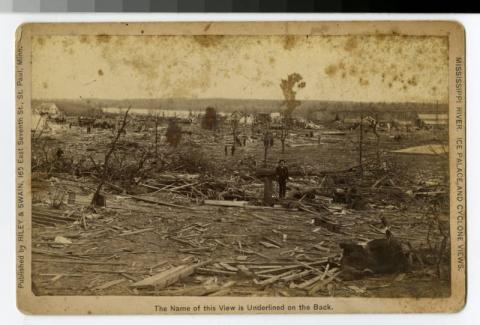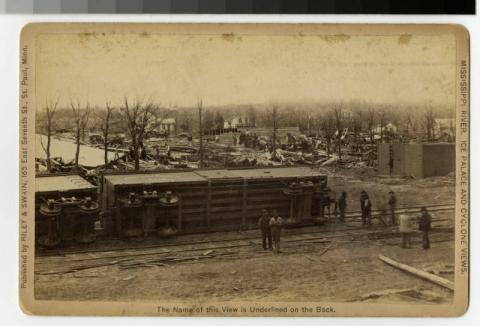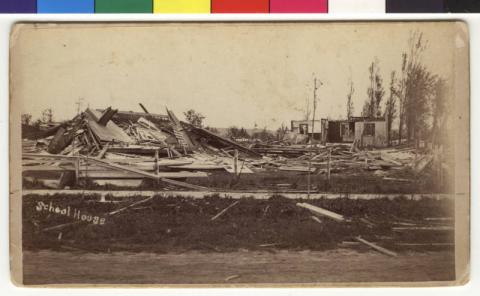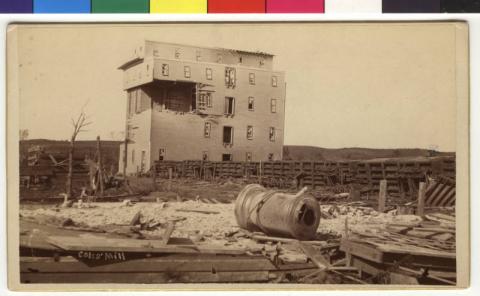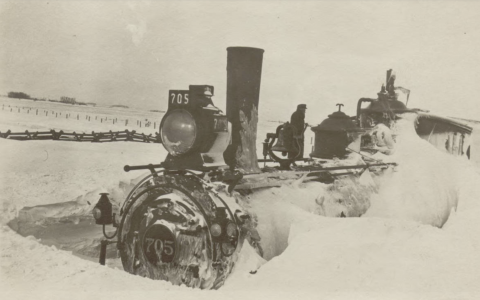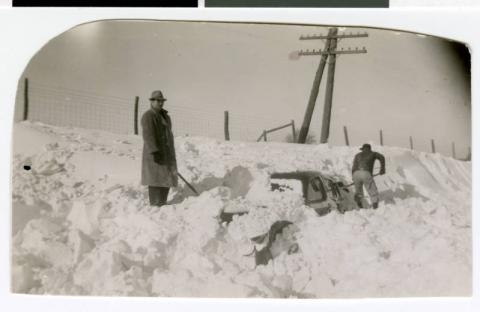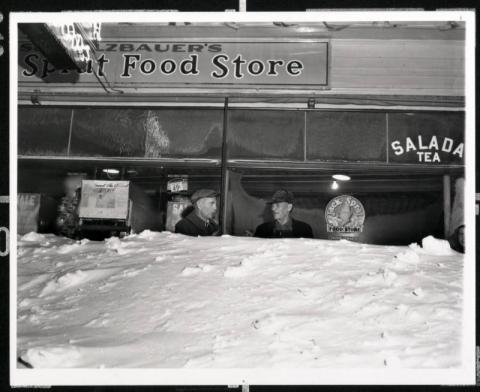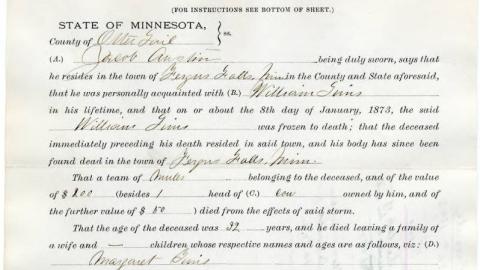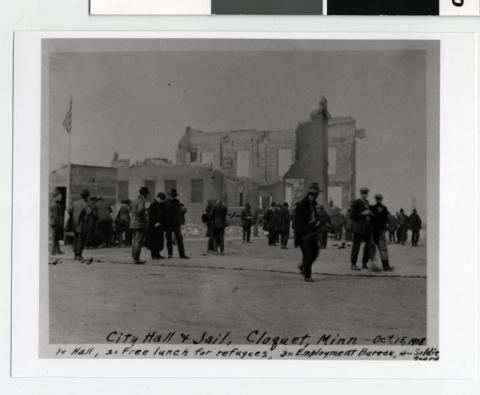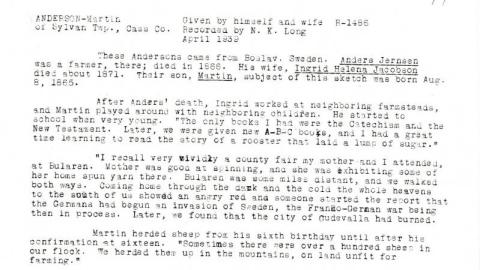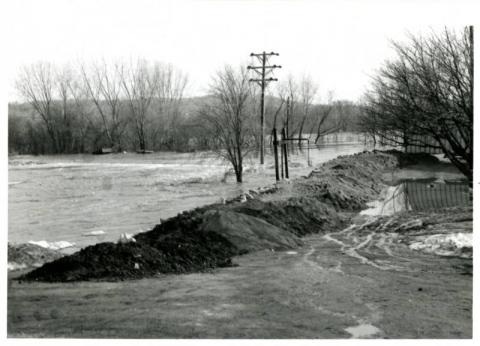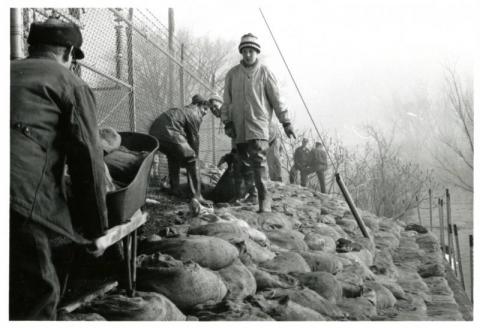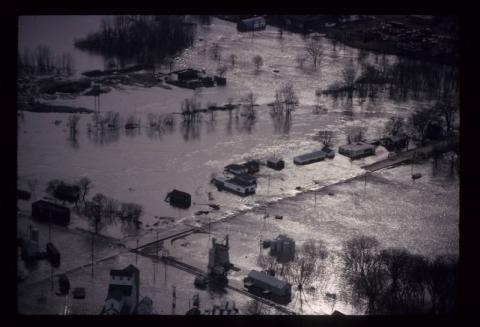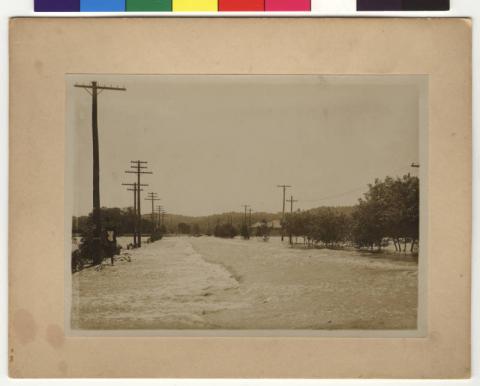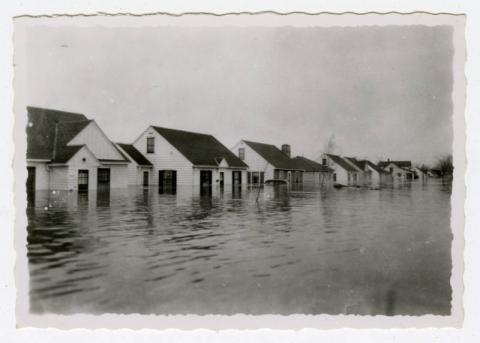Primary Source Set
by Beth Goodrich, Assistant Program Coordinator, Minitex
Natural disasters are destructive events caused by natural phenomena such as weather or geological disturbances. The earth’s structure is responsible for seismological events like earthquakes and volcanic eruptions. The majority of natural disasters are related to weather. Tornadoes, hurricanes, floods, blizzards, hailstorms, droughts and wildfires can cause severe injury or death as well as significant damage to property and ecosystems.
Human activities can magnify the destructive effects of natural occurrences. One of the worst natural disasters in Minnesota history is the Cloquet and Moose Lake Fire of 1918, which in reality was a combination of 50 fires in a single event. It is believed several fires were started by embers from locomotive engines. High winds and irresponsible logging practices provided fuel for the fires. Approximately 1500 square miles were consumed and many communities were burned to the ground, resulting in more than 450 deaths.
Aside from the toll on life and property, natural disasters can have a catastrophic impact on economies. Regional infrastructure can be damaged, and industries and livelihoods can be disrupted for long periods of time. In the aftermath of a disaster federal, state and local governments may implement changes to law or practice to help minimize losses of life and property in the event of future disasters.
Some of the significant Minnesota natural disasters documented in the Minnesota Digital Library include:
- Armistice Day Blizzard on November 11, 1940
- Cloquet and Moose Lake Fire of 1918
- Comfrey-St. Peter Tornado of 1998
- Fergus Falls Tornado of 1919
Other major disaster events in Minnesota History for further exploration:
- Boundary Waters-Canadian Derecho (Boundary Waters Blowdown) on July 4, 1999
- Capsizing of the steamer Sea Wing on July 14, 1890
- Children’s Blizzard of 1888
- Dust Bowl of the 1930s
- Flooding in Carver County of 1965
- Halloween Blizzard on October 31, 1991
- Hinckley Fire of 1894
- Red River Flood of 1997 in Grand Forks, ND and East Grand Forks, MN
- Sinking of the Edmund Fitzgerald on November 10, 1975
- Twin Cities Area Tornado Outbreak of 1965
Discussion Questions & Activities
- What hardships can you imagine you would face during a tornado? A wildfire? A blizzard? A flood? What are some common difficulties or dangers? What are some differences?
- Minnesota experiences extremes in temperatures, from 50 degrees below freezing in the winter to over 100 degrees in the summer. How does the weather play a role in the occurrence of natural disasters?
- Take a look at the photograph from the tornadoes in Sauk Rapids and Rochester. Many residents lost not only their homes and possessions, but also their animals. Businesses, schools and community buildings were also damaged or destroyed. What impact would this have on people's lives? What would they need for their lives to return to normal?
- What evidence do you see of people helping out their neighbors in times of disaster? Can you think of ways people have helped out in your community recently following catastrophic events?
- Look at the photograph from the Cloquet fire. Four elements of the image are labelled. What is the significance of each element? What do you imagine the atmosphere would be like in this scene? How are people feeling?
- Natural disasters are catastrophic events caused by natural processes, typically weather. But in some cases human activity can be partially responsible for a greater loss of life or property in the event of a natural disaster. What types of human activity might cause or spread a wildfire? What activities might magnify losses during a flood?
- Notice that the photos of flooding in St. Peter are from different years, 1908 and 1965. What does this tell you about the city of St. Peter? Why would the city want to build next to the river if the river overflows its banks periodically?
- Look at the photo of the monument to the Hinckley Forest Fire. Why would a monument to this event be erected? Can you think of any other monuments dedicated to a natural disaster?
- Natural disasters impact children and adults equally. Have students imagine that they are experiencing a blizzard, a flood, a wildfire, or a tornado in their community. Then lead a discussion on how their daily lives would change. Where would they live? Would they be able to go to school? How might they be able to help the community get back to normal?
- Communities will create emergency plans to prepare for the eventuality of severe weather, earthquakes or floods. Think about the types of natural disasters that might happen in your neighborhood and what you can do in your household to prepare for an emergency. Create an emergency plan such as a list of supplies, an evacuation plan, and emergency phone numbers or other communication tools that your family might use to prepare for a natural disaster emergency.
- Divide the class into 1-4 groups. Each group is to imagine that they are leaders in their local community, and the community is faced with one form of natural disaster. Discuss what types of hardships to expect with the event, what steps can be taken to prepare citizens for the event, what can be done to improve safety for citizens during the event, and what services and aid will be required following the event. Have each group create an emergency plan for the community for the specific catastrophic event.
- Often local or state governments will implement new safety guidelines or relief programs following a natural disaster. Discuss the safety measures that could be implemented for specific disasters and create a plan for infrastructure, land management, public services, and information and communications that would help to protect property and keep citizens safe.
eLibrary Minnesota Resources (for Minnesota residents)
"Floods." Gale Student Resources in Context, Gale, 2016. Student Resources In Context, https://link-galegroup-com.content.elibrarymn.org/apps/doc/YFKVRX938940844/SUIC?u=mnsminitex&sid=SUIC&xid=b5583a9b. Accessed 12 July 2019.
The Minneapolis Tribune, September 3, 1894
"Natural Disasters." Gale Student Resources in Context, Gale, 2010. Student Resources In Context, https://link-galegroup-com.content.elibrarymn.org/apps/doc/EJ2181500059/SUIC?u=mnsminitex&sid=SUIC&xid=4ab4b7fe. Accessed 12 July 2019.
"Wildfires." Gale Student Resources in Context, Gale, 2016. Student Resources In Context, https://link-galegroup-com.content.elibrarymn.org/apps/doc/TOXRVX236011929/SUIC?u=mnsminitex&sid=SUIC&xid=e30364e0. Accessed 12 July 2019.
Additional Resources for Research
Brown, Daniel, 1951-. Under a flaming sky: the great Hinckley firestorm of 1894. Guilford, Conn. : Lyons Press, c2006.
FEMA, Department of Homeland Security. Web. Accessed November 11, 2016.
Ford, Alyssa. "Children's Blizzard, 1888." MNopedia, Minnesota Historical Society. Accessed October 22, 2024.
"A History of Flooding in the Red River Basin" (PDF). USGS.
Keller, Martin. Storms! tales of extreme weather events in Minnesota. Minneapolis, Minn. : D Media, c2006.
Laine, Mary. "Great Hinckley Fire, 1894." MNopedia, Minnesota Historical Society. Accessed October 22, 2024.
Lyseth, Alaina Wolter. Hinckley and the fire of 1894. Publisher: Charleston, South Carolina : Arcadia Publishing, 2014.
Nelson, Paul. "Cloquet, Duluth, and Moose Lake Fires, 1918." MNopedia, Minnesota Historical Society. (accessed October 22, 2024).
Seeley, Mark W., 1947-. Minnesota weather almanac. Saint Paul, MN : Minnesota Historical Society Press, [2015].
Voices from the flood: an oral history of the 1997 flood of the Red River of the North. Grand Forks, N.D. : North Dakota Museum of Art, c1999.
Published onLast Updated on
